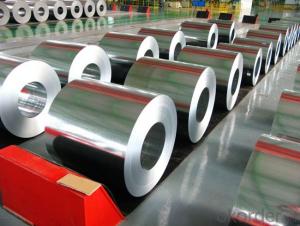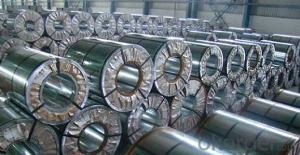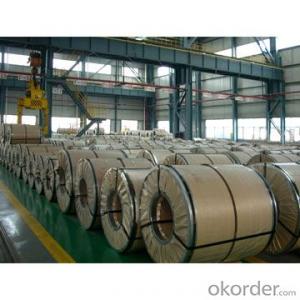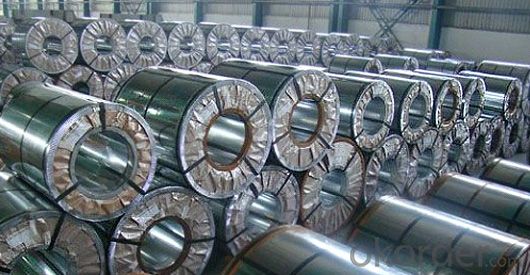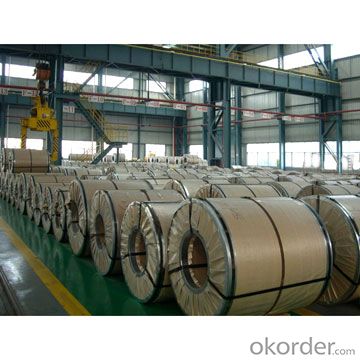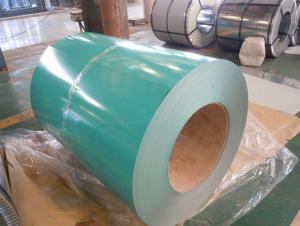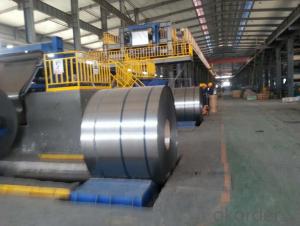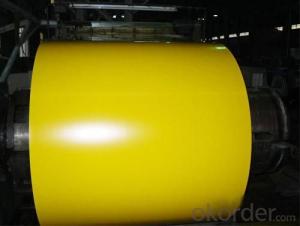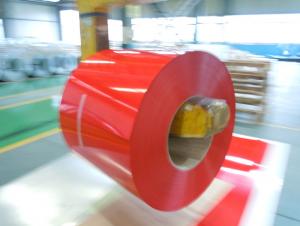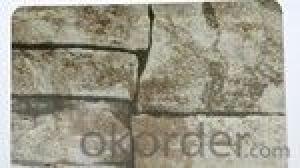Prepainted Galvanized Steel Coil for Building Decoration
- Loading Port:
- Qingdao
- Payment Terms:
- TT or LC
- Min Order Qty:
- 10 m.t.
- Supply Capability:
- 10000 m.t./month
OKorder Service Pledge
OKorder Financial Service
You Might Also Like
Prepainted Galvanized Steel Coil for Building Decoration
Main Structure of Prepainted Galvanized Steel Coil:
Thickness: 0.16~1.2mm
Zinc Coating: Z60~Z180
Coil ID: 508/610mm
Coil Wgt.: 2.5~8Mt
Specification for Prepainted Galvanized Steel Coil
PRODUCT | prepainted galvanized steel coil |
STANDARD | GB/T-12754: 2006, JIS3302, EN 10142, ASTM A653, JIS G3302, SGCC/SGCH, GB/T2518, European Standard, ASTM A792, JIS G3321, JIS G3317 |
BASE PLATE | Cold rolled steel sheet, hot dipped zinc coated steel sheet, hot dipped A-dx51d z100 galvanized steel coil coated steel sheet |
EQUIPMENT | Double coating double baking; three coating three painting |
CAPACITY | 500,000Mt/year |
SIdx51d z100 galvanized steel coilE | Thickness 0.16mm-1.2mm, width 700mm-1250mm |
dx51d z100 galvanized steel coilINC COATING | 60g-180g |
PAINT THICKNESS | Top:20+-5um, back:5-7um |
COIL WGT | 2.5Mt-8Mt |
COIL ID | φ508mm-φ610mm |
BASE SHEET | Cold rolled steel sheet, hot dipped zinc coated steel sheet (small, regular or zero spangle),hot dipped A-dx51d z100 galvanized steel coil coated steel sheet |
SURFACE PAINT | EP, PE, HDP, SMP, PVDF |
COLOR SERIES | RAL color number series |
SURFACE TYPE | Printed, embossed, corrugated |
FAQ
Q: How’s your service?
A:1. Offer customers 24/7 service, whenever you need us, we are always here for you.
2. Immediate response. Your any inquiry will be replied within 24 hours.
3. Support small order quantity, for the first time cooperation customers, we can send you less quantity for trial order.
4. Support third party inspection company to inspect and check the quality and quantity before delivery.
Picture:
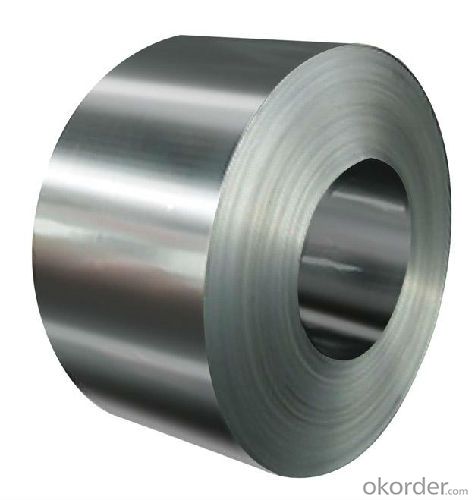
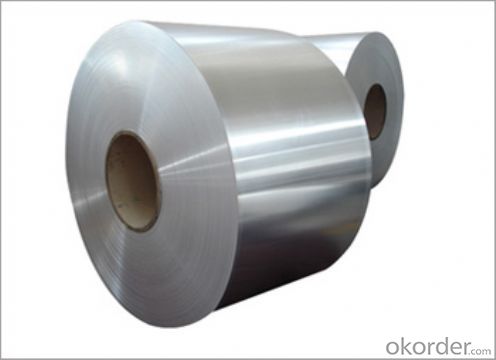
- Q: How are steel coils used in the manufacturing of hydraulic cylinders?
- Steel coils are used in the manufacturing of hydraulic cylinders as they provide the necessary strength and durability required for the functioning of these cylinders. The coils are typically rolled and shaped into the desired cylindrical form, which serves as the outer body of the hydraulic cylinder. The steel coils are then further processed and assembled with other components to create a sealed chamber, where hydraulic fluid is pressurized to generate mechanical force. Overall, steel coils play a crucial role in ensuring the structural integrity and performance of hydraulic cylinders.
- Q: 911 conspiacy theorists. Can fire melt steel?
- There okorder /
- Q: Can steel coils be coated with self-cleaning materials?
- Yes, steel coils can be coated with self-cleaning materials.
- Q: I had heard of steel braided fuel lines but ive also seen some air and coolant lines that are steel braided. Are these commonly used? I guess what I'm asking is if its a good idea to use them.
- Steel braided line are mainly use in turbulence areas, where they need to be protected. i would recommend replacing your brake line with it but not your coolant or air lines. there are other materials that are well suitable for coolant and air lines.
- Q: Why buy recycled steel and from where to buy?
- Where you buy all your steel. The recycled and new steel are indistinguishable from each other. You won't recognize the one from the other. Same thing with glass. A certain percentage must be used glass, to enhance the quality of the total batch. Peace.
- Q: How do steel coils contribute to durability and longevity in products?
- Steel coils contribute to durability and longevity in products mainly due to their strength, stability, and corrosion resistance. Firstly, steel is renowned for its exceptional strength, making it an ideal material for various applications where durability is crucial. Steel coils, which are essentially tightly wound rolls of steel, provide added strength and structural integrity to products. The stability offered by steel coils is another key factor in enhancing the durability of products. The tightly wound structure of the coils ensures they maintain their shape and resist deformation under heavy loads or extreme conditions. This stability is particularly important in industries such as construction and automotive, where products need to withstand rigorous usage over extended periods. Moreover, steel coils possess exceptional corrosion resistance properties, primarily due to the presence of protective coatings. These coatings, such as zinc or other metallic alloys, act as a barrier against moisture and environmental elements that can cause rust and degradation. By preventing corrosion, steel coils help prolong the lifespan of products, making them more durable and reliable. Additionally, steel coils can be customized to meet specific requirements, such as different thicknesses, widths, or surface finishes. This versatility allows manufacturers to tailor the steel coils to their desired application, ensuring optimal performance and longevity in their products. In summary, steel coils contribute to durability and longevity in products through their strength, stability, corrosion resistance, and customization capabilities. By incorporating steel coils into various industries and applications, manufacturers can ensure their products withstand the test of time, ultimately benefiting consumers with longer-lasting and more reliable products.
- Q: What is the maximum length of a steel coil?
- The maximum length of a steel coil can vary depending on various factors such as the type of steel, manufacturing process, and intended use. However, in general, steel coils can range from several hundred feet to several thousand feet in length.
- Q: How can I owe a Pre-engineered Steel Building?
- You just have to do small efforts for owing a steel building: Firstly you have to finalize a steel building company for construction work. After finalizing the steel building company, the next step is the paperwork - the agreements and contracts. Some steel building companies may also ask for a verbal approval for the factories to get the work started.
- Q: What are the different grades of steel used in coil production?
- There are various grades of steel used in coil production, including low carbon steel, high carbon steel, stainless steel, and advanced high-strength steel. These grades are chosen based on the specific requirements of the application, such as strength, corrosion resistance, and formability.
- Q: Can I ever get my classical guitar reinforced so it can have steel strings on it?
- NO. A classical guitar is braced very differently than a steel-string acoustic. Plus the set-up is completely exceptional - the best way the nut is slotted, the best way the strings tie on the bridge, and so on. The anxiety of steel strings would pull the bridge and top off of a just right classical guitar. Although it's a mass-produced cheap person who would take the tension - you'll certainly not be capable to play it - the action on a nylon string guitar is far better in most cases. Who cares how long strings last - you're talking about $5-10 for a suite of strings. Changing strings is part of playing guitar.
Send your message to us
Prepainted Galvanized Steel Coil for Building Decoration
- Loading Port:
- Qingdao
- Payment Terms:
- TT or LC
- Min Order Qty:
- 10 m.t.
- Supply Capability:
- 10000 m.t./month
OKorder Service Pledge
OKorder Financial Service
Similar products
Hot products
Hot Searches
Related keywords
